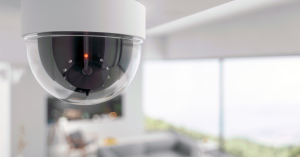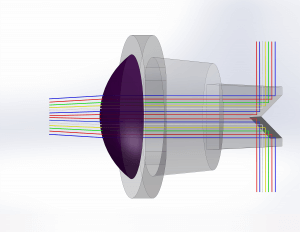Infrared lenses are crucial in surveillance and other applications requiring clear imaging with infrared light, overcoming issues caused by varying wavelengths. Their advanced opto-mechanical design ensures optimal performance in challenging conditions.
Regular lenses suffice in surveillance scenarios where infrared light supplementation is unnecessary. However, in situations requiring infrared light supplementation, the use of specialized infrared lenses becomes crucial for optimal monitoring results. Although regular lenses can capture images with infrared supplementation, the resulting images may become blurry, a common issue in surveillance scenarios.
Professional infrared lenses, despite being more expensive than regular lenses, offer clear and high-quality images both during the day and at night. The disparity in performance and cost between these two lens types stems from the fact that different wavelengths of light refract differently by glass, causing a shift in the focal point’s position. Regular lenses can effectively focus light within a certain wavelength range, leading to clear images. However, this may result in clarity issues at night or during the day, depending on the wavelength range.

Optical lenses operate within specific wavelength ranges. While light waves within these ranges form clear images on a focal plane with minimal energy attenuation, waves outside this range may lead to poor image quality, low resolution, and energy attenuation. Infrared lenses have been optimized to respond effectively to different infrared wavelengths, blocking unwanted wavelengths.
During light propagation, shorter wavelengths, such as natural light, can be obstructed by obstacles like fog or rain, while longer wavelengths, like infrared light, easily pass through. Infrared lenses, with their infrared correction and transparency, ensure clear imaging even under challenging conditions. The latest optical design methods and advanced materials eliminate focus shifts between visible and infrared light, addressing clarity issues during the day and night.
Commonly, a clear daytime image may become blurry under infrared conditions due to differences in visible and infrared light wavelengths. Advanced optical design, special glass materials, coatings, and materials have eliminated focus shifts, ensuring that light is focused at the same point for both visible and infrared light. Special coatings allow infrared light penetration while suppressing ghosting and flares, providing high-quality images with high contrast, even under unfavorable backlight conditions.
For a high-performance optical system, a solid foundation of well-maintained and accurately aligned mechanical components is essential. With over 20 years of experience in opto-mechanical design, Shanghai Optics’ mechanical engineers utilize software like AutoCAD and SolidWorks to integrate interfaces and consider environmental factors. Adhering to specified requirements guarantees the system’s technical performance.

Infrared lenses are crucial in various industries for capturing and focusing infrared radiation. Designed for different regions of the infrared spectrum (SWIR, MWIR, and LWIR), these lenses are typically made from specialized materials such as germanium, zinc selenide, and chalcogenide glasses.
In conclusion, infrared lenses are vital components contributing to advancements in research, diagnostics, and security technologies. For a free consultation or a quote on your next project, please feel free to contact us.